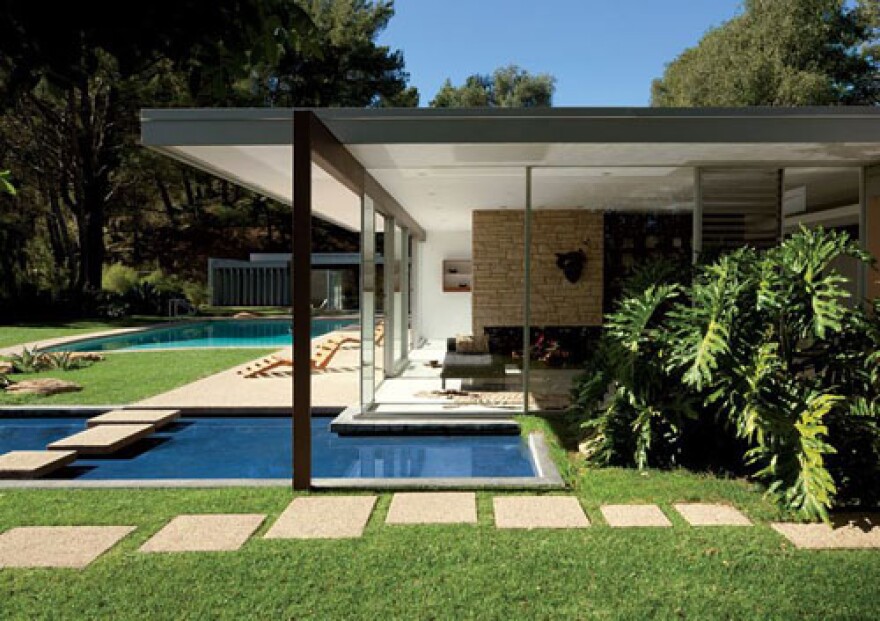
They called him a “prophet of clean, crisp, modernism”, and behind Frank Lloyd Wright, Richard Neutra one of the 20th century’s most famous architects.
“People like to say that my father was influenced by Frank Lloyd Wright, but I don’t think that’s true” Dion Neutra said on WFAE’s Charlotte Talks. “I think my father got his influence from other sources.”
The style that eventually defined his father came about after a client asked him an interesting question.
“The owner at that time came to him and said I want to design a house that enhances the health of the user or the inhabitant, what can we do to do that?” Neutra says. “And that of course is an extremely simulating program for any architect to hear.”
So Richard Neutra created what he eventually became famous for, buildings with sweeping balconies, open plans, and floor to ceiling windows. It was based on something he called bio-realism; it’s the idea that man and nature are inseparable and it played into all of Richard Neutra’s architecture.
“It was kind of a basic thing.” Neutra says. “Man came from nature originally and we haven’t really made a good adjustment to being in a box with little windows. So people instinctively feel more comfortable in an interior where they can communicate with nature on the outside. “
Today Dion Neutra spends much of his time advocating on behalf of his father’s work. In recent years, many of his father’s buildings been demolished or modified to suit the owner’s taste.
Dion compares altering these homes to messing with a masterpiece.
“If you buy a Picasso you’re not likely to be remodeling the colors because it doesn’t fit your color scheme” Neutra says.
He makes such arguments in a book called, The Neutras: Then and Later. It follows the fate of his father’s 400 or so structures.
Dion Neutra will discuss them further in a lecture on Thursday, November 15 at 7pm at the Bechtler Museum of Modern Art.

